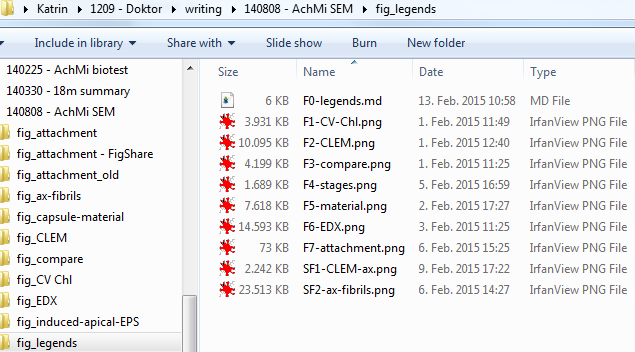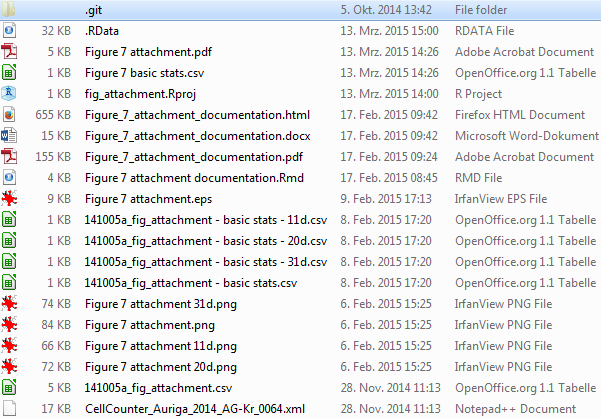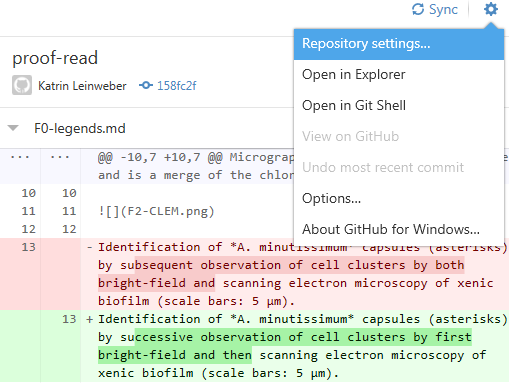| title | author | date | license |
|---|---|---|---|
Digital Lab Journalling with Git |
Katrin Leinweber |
2015-Apr-13 |
CC-BY-4.0 for own content; image attributions in titles |
Slides of this presentation with recorded audio (archived notes)
- highlights exactly what changed, line by line
- makes you comment file changes
- works best for line- or paragraph-based files
- built for source code, but also useful for texts and simple images
- less useful for complex or large file types
- not a substitute for full backups
- helps build self-explanatory & verifiable project documentation (for your future self, colleagues, students, reviewers...)
- enables less painful collaboration on same set of files
- conflicts only if same lines in same file get changed
- for text files: better than syncing tools
- project folder watched by Git
- is still a normal folder: add, edit & delete files normally
- database of file versions in hidden subfolder
- saving a logical set of file changes in Git, together with meaningful comment
- changes can be within single file, or across different ones
- commit history: self-explanatory & verifiable documentation
- file that contains a repo's rules for ignoring files
- No preview of highlighted changes? Large file? Auto-generated? Rather ignore those!
- project folder watched by Git, plus hidden database of file versions
- composing logical set of file changes and meaningful commit message
- a repo's ignore rules for non-essential files & file types
- download client from windows.github.com (any other from git-scm.com/downloads/guis) & install
- start with small sub-project (protocol optimisation, diagram in R, report, etc.)
- besides working on the files themselves: commit logically connected changes often
- recommended: start writing texts in Markdown1 format
- optional (for collaboration etc.): create account with Git hosting service like GitLab or GitHub
- "Markdown Basics" and "Mastering Markdown" by GitHub
- "Scientific Markdown" by Jens Erat
- "Paper Now" by PeerJ
- "Git/GitHub: a Primer for Researchers" by Carly Strasser
- "We Need a Github of Science" by Marcio von Muhlen
- "Git for Scientists" by Molly Gibson
- "Learn Version Control with Git" by Fournova
- "10 Years of Git: An Interview with Git Creator Linus Torvalds" by Jennifer Cloer











